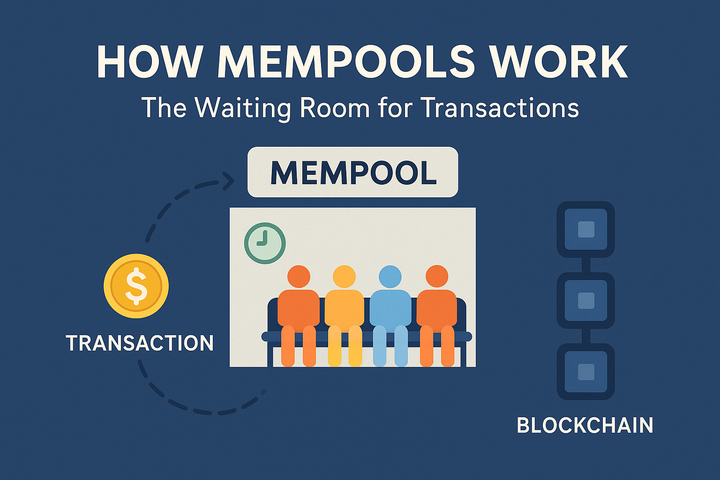The great unbundling: How Mitosis could replace CEXs for institutional Trading. Liquidity depth comparisons, Regulatory Advantages

🧨 The Great Unbundling: How Mitosis Could Replace CEXs for Institutional Trading
For years, centralized exchanges (CEXs) like Binance, Coinbase, and Kraken have served as the primary access points for institutional traders in crypto. Their core value props—deep liquidity, easy execution, and regulatory optics—made them feel like the safest bet in a volatile industry.
But today, the model is cracking.
CEXs face intensifying regulatory pressure, opaque business practices, and counterparty risks. The collapse of FTX made it painfully clear: institutions need transparency, self-custody, and programmable liquidity, not black-box intermediaries.
This is where Mitosis enters the conversation—as a next-gen liquidity layer that unbundles the key services of CEXs, and does so with chain-agnostic infrastructure, smart contract logic, and institutional-grade tooling.
🧱 The CEX Stack: Bundled by Default
CEXs traditionally bundle three core services:
- Custody: User assets are stored in wallets controlled by the exchange.
- Liquidity: Trading pairs and order books operate within the siloed exchange ecosystem.
- Execution: Trades are matched off-chain using internal engines, without public auditability.
This all-in-one model may be convenient—but it’s fundamentally flawed:
- You’re trusting a centralized party with your capital.
- You’re reliant on one liquidity pool, often fragmented or manipulated.
- You have no transparency into trade execution or fund flows.
🧬 The Mitosis Stack: Modular, Transparent, Programmable
Mitosis deconstructs the CEX model and rebuilds it from the ground up using decentralized infrastructure.
| Traditional CEX | Mitosis Replacement |
|---|---|
| Central custody | Self-custody via smart contract vaults |
| Siloed liquidity | Cross-chain, composable liquidity layer |
| Private order books | On-chain execution + programmable routing |
| Black-box operations | Fully auditable, transparent flows |
This modular approach means institutional players can opt-in to the pieces they need—custody, yield access, or execution—and design trading strategies around programmable liquidity pools instead of opaque venues.
💧 Liquidity Depth: Aggregated > Isolated
CEX liquidity is siloed. A USDT/ETH pair on Binance isn’t the same as the one on Coinbase or Bybit—and even within those, liquidity can shift dramatically due to market sentiment, listing policies, or regulatory pressure.
Mitosis solves this by aggregating liquidity across chains, creating a unified liquidity fabric that institutions can tap into seamlessly.
Key Mitosis features that unlock deep liquidity:
- 🔄 Auto-rebalancing pools: Dynamically allocate capital across chains and assets.
- 🧬 Yield tokenization: Converts future yield into tradeable assets, unlocking passive capital for active use.
- 🌊 Rehypothecation-aware logic: Capital can serve multiple functions (e.g., collateral + LP) with lower risk.
📊 Example: An institutional desk can route a trade through Mitosis, sourcing liquidity from Ethereum, Arbitrum, and Optimism simultaneously—without wrapping, bridging, or splitting the trade.
📏 Real-World Comparison: Mitosis as Prime Broker 2.0
In TradeFi, institutional desks often rely on prime brokers to aggregate liquidity across banks, handle execution, and manage margin.
Mitosis mimics this model, but on-chain and without trust assumptions:
- Think multi-chain dark pool meets automated prime brokerage, built on smart contracts.
- Transparent execution flows, programmable access rules, and full audibility by both clients and regulators.
⚖️ Regulatory Advantage: Mitosis Is Built for Tomorrow’s Rules
With MiCA (EU), HK VASP licensing, and SEC custody rules on the horizon, institutions are under pressure to move toward transparent, compliant infrastructure.
The CEX Compliance Problem
Many CEXs face:
❌ Jurisdictional Risks – Regulatory crackdowns (e.g., Binance vs. SEC).
❌ Custodial Risks – FTX-style collapses.
❌ Lack of Transparency – Opaque reserves and trading practices.
How Mitosis Offers a Compliant Alternative
Mitosis is designed with institutional compliance in mind:
🔹 Self-Custody Trading – Institutions retain asset control (no counterparty risk).
🔹 Auditable Liquidity – On-chain transparency vs. CEX "black boxes."
🔹 KYC/AML Layers – Optional compliance modules for regulated entities.
🔹 No Single Point of Failure – Decentralized infrastructure avoids FTX-style collapses.
Case Study: A hedge fund using Mitosis can:
- Trade cross-chain with verified counterparties.
- Avoid CEX withdrawal limits/freezes.
- Prove solvency via on-chain reserves.
Mitosis is ahead of the curve:
- ✅ On-chain records for full auditability
- 🛂 Permissioned pools for compliant trading zones
- 📜 Customizable access control, allowing whitelisting, KYC gating, and compliance logic enforcement at the smart contract layer
- 🔐 No commingling, assets stay in self-custody vaults, reducing counterparty exposure
Mitosis is a DeFi-native compliance layer, not an afterthought.
🛠️ Institutional Use Case: Capital Deployment via Mitosis
Scenario: A digital asset fund wants to:
- Deploy stablecoin capital into DeFi
- Maintain self-custody
- Avoid long-tail smart contract risk
- Ensure liquidity across chains
With Mitosis, they can:
- Deposit funds into auto-rebalancing liquidity vaults (yield-bearing, capital-efficient).
- Use programmable yield tokenization to hedge or trade future rewards.
- Route trades using on-chain logic that taps into multi-chain liquidity sources with execution transparency.
- Stay compliant via permissioned environments or allowlist-only pools.
All without:
- Needing a native token launch
- Relying on a third-party custodian
- Risking operational opacity
🌍 Market Size + The Unbundling Opportunity
Institutions represented $1.4 trillion+ in crypto volume in 2023. Today, CEXs hold over 90% of that flow—but that dominance is slipping.
If even 10–15% of that migrates to decentralized, compliant, programmable alternatives like Mitosis, we’re looking at $100B+ in potential on-chain institutional activity.
As asset managers, family offices, and trading firms modernize their infra stacks, Mitosis becomes the middleware that enables:
- Capital preservation
- Regulatory clarity
- Cross-chain exposure
- Superior liquidity access
🚀 Mitosis as the Institutional Liquidity Layer
Mitosis is not just a DeFi protocol, it’s an infrastructure layer that makes the benefits of CEXs available without the risks of centralization.
Institutions get:
- ✅ Multi-chain liquidity access
- ✅ Self-custody vault infrastructure
- ✅ Transparent execution
- ✅ Yield tokenization and capital efficiency
- ✅ Compliant design with programmable controls
The CEX era was built for a different time. The future is modular, programmable, and on-chain.
The future is Mitosis.
The Future: Will Mitosis Replace CEXs for Institutions?
The Path to Adoption
✅ Liquidity Partnerships – Integrating with institutional market makers.
✅ Regulatory Clarity – Working with policymakers for DeFi compliance.
✅ Performance Optimizations – Lower latency, better price execution.
Challenges Ahead
❌ Liquidity Fragmentation – Needs deeper cross-chain adoption.
❌ Institutional Onboarding – Requires better fiat ramps and UX.
Prediction: The "Great Unbundling" of CEXs
Mitosis won’t kill CEXs overnight, but it offers a more efficient, transparent, and compliant alternative. As DeFi liquidity deepens, expect:
- Institutions to shift OTC trades to Mitosis-style platforms.
- CEXs to adopt Mitosis’s omnichain tech (or become obsolete).
- Regulators to favor transparent DeFi over opaque CEXs.
Conclusion: Here’s a concise and insightful conclusion for the article on "The Great Unbundling: How Mitosis Could Replace CEXs for Institutional Trading":
🔚 Conclusion: A New Institutional Era Is Being Forged On-Chain
The cracks in centralized exchange infrastructure are no longer theoretical they're visible, growing, and increasingly unsustainable for institutions seeking trustless, transparent, and compliant liquidity venues. Mitosis offers a radically improved alternative: modular, auditable, and chain-agnostic infrastructure designed for the future of institutional-grade DeFi.
By unbundling custody, liquidity, and execution, and rebuilding each with smart contracts and programmable logic, Mitosis creates a composable architecture that’s more secure, capital-efficient, and regulatory-ready than the legacy CEX model.
As institutions migrate toward on-chain settlement, cross-chain execution, and programmable access control, Mitosis isn’t just an option—it’s becoming a necessity.
The future of institutional trading won’t be centralized.
It will be composable, transparent, and Mitosis-powered.



Comments ()